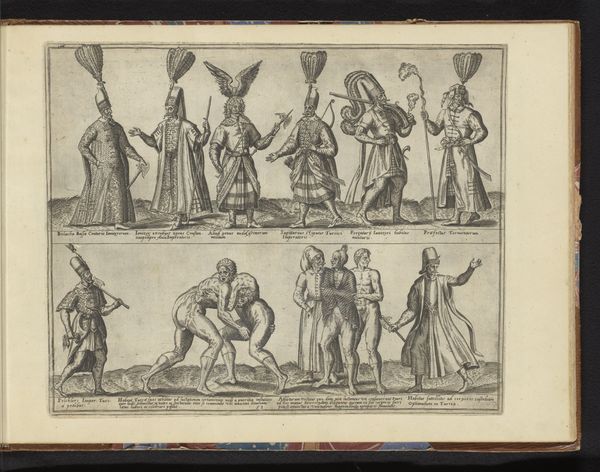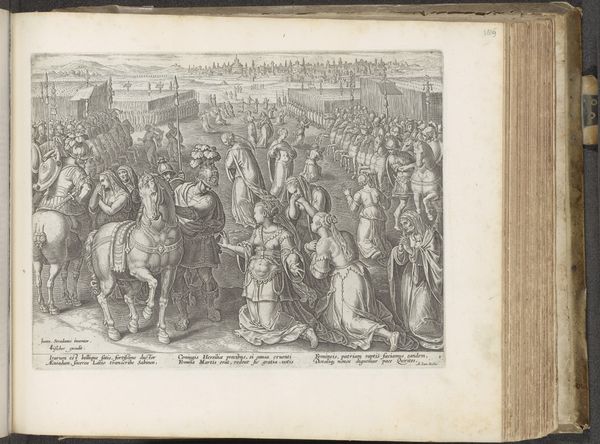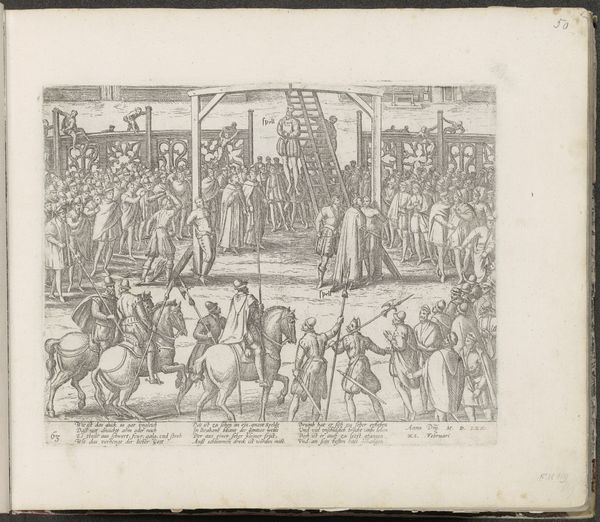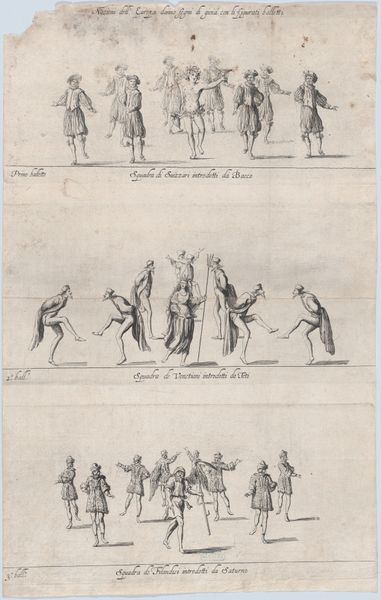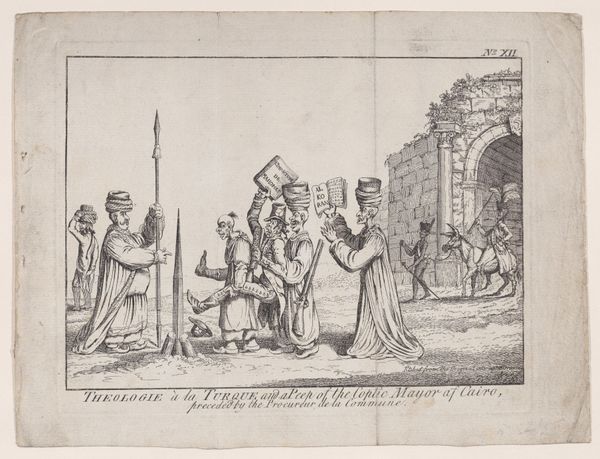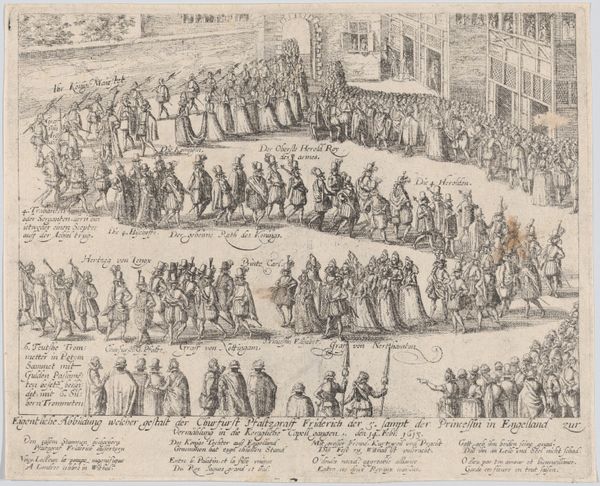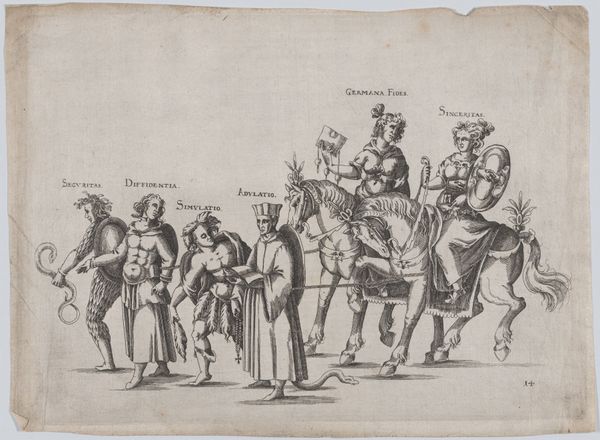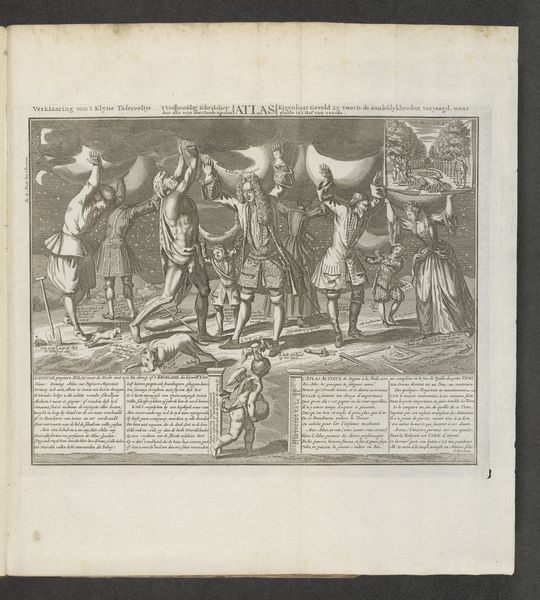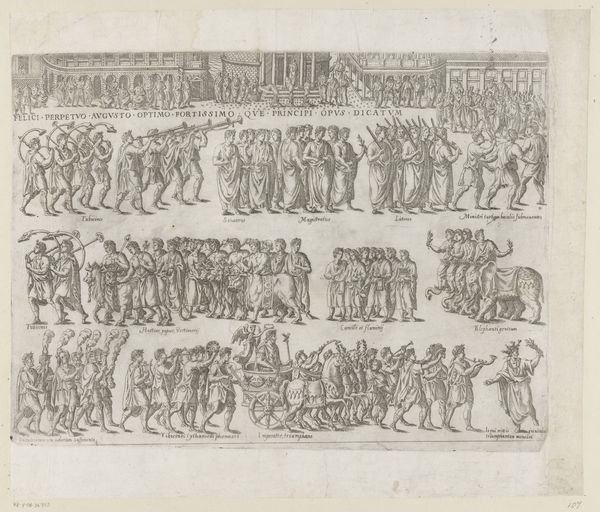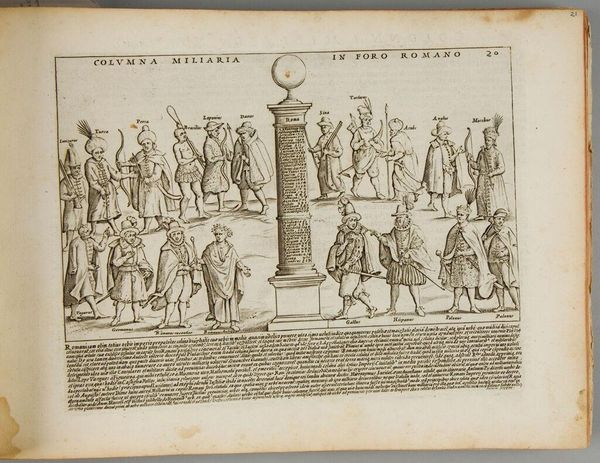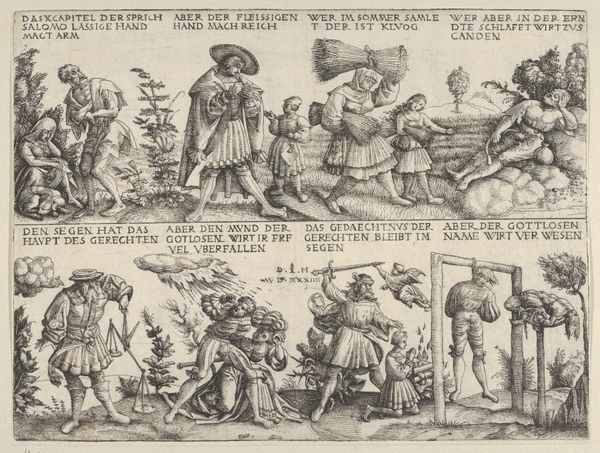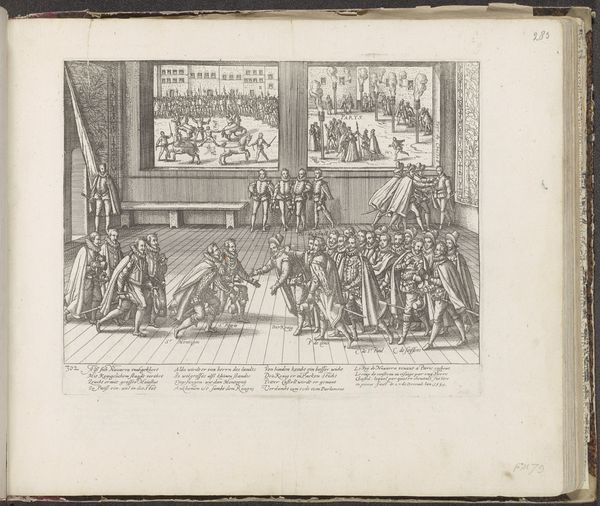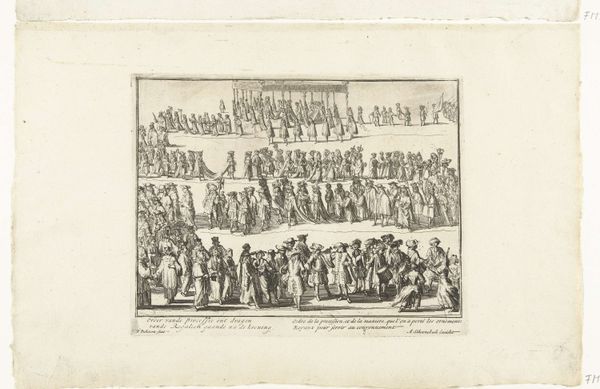
Plate from a book showing a procession of men and women with a skeleton at the beginning, middle and end of the line 17th century
0:00
0:00
drawing, print, engraving
#
drawing
# print
#
mannerism
#
history-painting
#
engraving
Dimensions: Sheet: 10 13/16 × 16 7/16 in. (27.4 × 41.7 cm) Plate: 9 1/8 × 15 13/16 in. (23.2 × 40.2 cm)
Copyright: Public Domain
Curator: Here we have a 17th-century print, currently held in the Metropolitan Museum of Art, titled "Plate from a book showing a procession of men and women with a skeleton at the beginning, middle and end of the line". It seems the piece is attributed to an anonymous artist and produced using engraving techniques. Editor: It strikes me immediately as rather macabre, yet… almost jovial? There's a clear march, but the skeletal figures, while unsettling, have a strange playfulness about them. Curator: Indeed. These depictions align with the “danse macabre” tradition, quite popular in the late Medieval and Early Modern periods. This work serves as a social commentary, highlighting the universality of death regardless of social status. The skeletal figures bookend and punctuate the line of clergy, nobles, merchants, men and women. Editor: It’s fascinating how these images worked to remind people of their mortality, these ‘memento mori’. Notice how death is never depicted as fearsome here but rather something that accompanies us throughout life's journey. He is even leading and directing these people. I also think it’s crucial to notice how he’s not just simply guiding these folks with his presence or walking among them: at the beginning of the procession he’s carrying a musical instrument. The ‘dance’ aspect seems central to how this was visualized at the time. Curator: Absolutely, and placing this within its historical moment is essential. This work likely appeared during a time of widespread social unrest or disease. Death became a shared experience, blurring class boundaries in the face of an inescapable reality. It became socially acceptable to present death and dying publicly, not only to invite conversation about its place within the social body but to make sure it occurred appropriately within it. This work is not only a memento mori but it represents part of a larger phenomenon. Editor: Yes! I also find myself wondering about the serpent that coils around Death’s feet at the start of the procession; it seems like it could tie into all of these ideas and possibly allude to some form of cultural mythology, particularly the “ouroboros” idea representing eternal return and death and rebirth continuously. Curator: It definitely contributes to the print's complex symbolic register. Its placement, right at the head of the procession, subtly steers the viewer to contemplate more than just physical death. The artist reminds the viewer that there’s a continuous transformation within a historical moment. Editor: Looking at the complete work gives one much to think about. The constant push and pull between acceptance and inevitability seems to really define this moment through time.
Comments
No comments
Be the first to comment and join the conversation on the ultimate creative platform.
